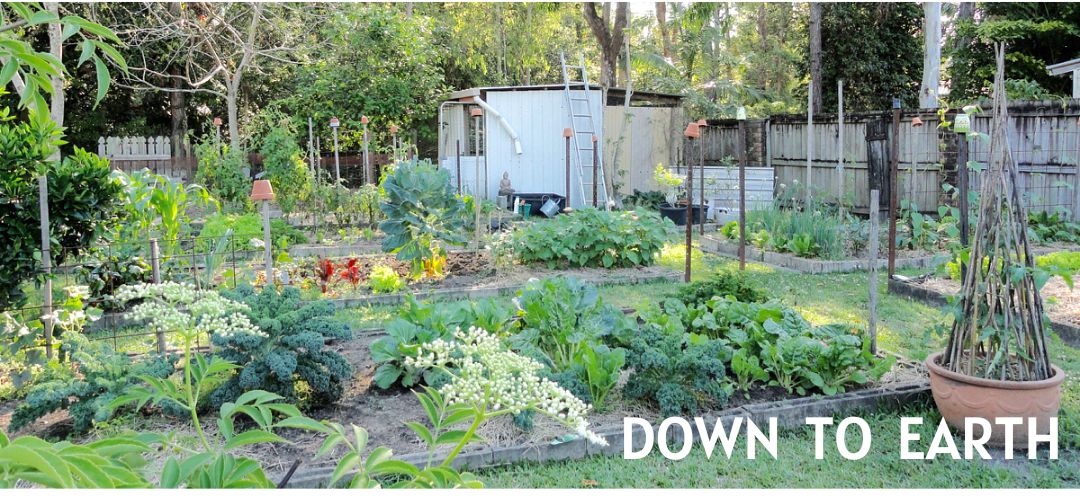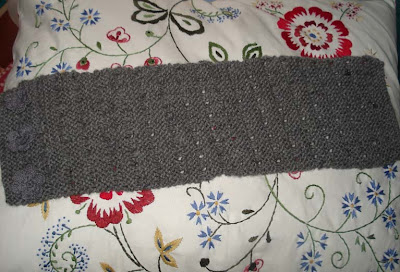I don't consider myself a good knitter. I think my talent lies in picking projects that I'm capable of doing. :- ) That said, most knitting is plain or purl, or various combinations of it. My mother taught me to knit but I didn't see the value of it until I understood more about its meditative qualities and could slow down enough to appreciate and be changed by it.
If you're new to knitting, it's quite easy to become more proficient. You do that by knitting dishcloths - think of each one as a little sampler, but your sampler has the additional benefit of being usable as well. Sharon and other knitters have posted a lot of learn to knit sites so all you need to have is some time, a pair of needles and yarn. Once you've mastered cast on and cast off, plain and purl stitches, go back to your knitting site and have a look at the knitting abbreviations. All knitting patterns use these. On your next dishcloth, practise some of the next steps like K2tog (knit two together) or YO (yarn over), mixing them in with your plain and purl stitches and see how your pattern develops.
I am not proficient enough yet to worry about tension. I just knit until it fits. ;- )
This Ascot scarf is a simple pattern of plain, purl, K2tog and YO and it goes like this.
Cast on 34 stitches.
Knit 8 rows.
Knit 1, YO, K2tog and repeat until the end of the row.
Purl one row.
And repeat those three sets of instructions until the scarf is the size you want.
Finish with knit 8 rows and cast off.
You'll need to find some form of fixing the scarf on the neck. I chose two press studs that are hidden under two of these crocheted flowers. I set the press studs at an angle to allow the scarf to fit in around the neck but open up a little towards the shoulders. If you click on the photo above, you'll see the press studs on the right hand side. You could also use buttons or a pin/brooch.
This grey scarf measures 6 inches by 18 inches and took about 1½ balls of pure wool. I used size 6 needles. The scarf is a variation of this scarf which would be a great project if you have some silky yarn.
If you're new to knitting, it's quite easy to become more proficient. You do that by knitting dishcloths - think of each one as a little sampler, but your sampler has the additional benefit of being usable as well. Sharon and other knitters have posted a lot of learn to knit sites so all you need to have is some time, a pair of needles and yarn. Once you've mastered cast on and cast off, plain and purl stitches, go back to your knitting site and have a look at the knitting abbreviations. All knitting patterns use these. On your next dishcloth, practise some of the next steps like K2tog (knit two together) or YO (yarn over), mixing them in with your plain and purl stitches and see how your pattern develops.
I am not proficient enough yet to worry about tension. I just knit until it fits. ;- )
This Ascot scarf is a simple pattern of plain, purl, K2tog and YO and it goes like this.
Cast on 34 stitches.
Knit 8 rows.
Knit 1, YO, K2tog and repeat until the end of the row.
Purl one row.
And repeat those three sets of instructions until the scarf is the size you want.
Finish with knit 8 rows and cast off.
You'll need to find some form of fixing the scarf on the neck. I chose two press studs that are hidden under two of these crocheted flowers. I set the press studs at an angle to allow the scarf to fit in around the neck but open up a little towards the shoulders. If you click on the photo above, you'll see the press studs on the right hand side. You could also use buttons or a pin/brooch.
This grey scarf measures 6 inches by 18 inches and took about 1½ balls of pure wool. I used size 6 needles. The scarf is a variation of this scarf which would be a great project if you have some silky yarn.

